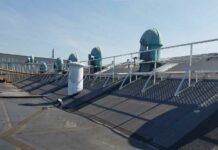The Hidden Costs of Recurring Purchases: Cut Unexpected Expenses and Maximize Profitability
What are recurring purchases? For many corporations, they are seen as a predictable and rather trivial element of procurement operations. However, under the hood, these repeated transactions can hide significant costs that erode a business’s profitability. If not analyzed properly, these expenditures can put any organization at risk of significant financial pitfalls.
The first step in tackling these challenges is understanding them and developing a comprehensive strategy. Besides just decreasing the expenses over time, it helps executives make more informed decisions and gain clear visibility into the whole procurement process. In this guide, we’ll explore how to identify hidden procurement expenses, prevent budget surprises, and maximize profitability.
What Makes Recurring Purchases Risky?
At first glance, recurring procurement expenses seem simple. You secure a contract, define a purchasing schedule, and expect consistent pricing. Yet, over time, additional fees, contract creep, inefficiencies, and unmanaged supplier changes introduce silent financial drains.
Many organizations fall into the trap of assuming all recurring purchases are optimized. This assumption can be dangerous, particularly when subtle changes, such as shifting market prices or fluctuating service fees, go unnoticed.
A key part of controlling these costs is understanding procurement models. For example, choosing between blanket PO vs standard PO affects the structure and management of ongoing purchases, and selecting the wrong model can lead to overspending or contract misalignment.
Common Hidden Costs in Recurring Procurement
Several categories of hidden expenses frequently undermine procurement budgets:
- Administrative Fees: Transaction costs, late payment penalties, and processing charges often go unnoticed until they accumulate significantly.
- Storage and Handling: Items ordered regularly but stored inefficiently incur additional warehousing and management costs.
- Price Fluctuations: Without continuous contract monitoring, small price increases can go unchallenged over time.
- Supplier Change Fees: Switching vendors mid-contract, even for recurring purchases, can trigger penalties or transition charges.
How to Detect Hidden Costs Before They Impact Profitability
Unexpected procurement expenses can cause departments to reduce important spending elsewhere, halt projects, or upset cash flow forecasts. These financial shocks affect entire companies and ultimately reduce their competitiveness. Decision-makers have limited visibility when thorough spend analysis is lacking. Ignoring this layer of information results in ill-informed procurement choices, unsuccessful supplier discussions, and inadequate cost-containment tactics.
A thorough procurement cost analysis anchored in the total cost of ownership (TCO) principles enables organizations to forecast accurately, plan strategically, and manage risks proactively.
Strategies to Minimize Unexpected Expenses
Reducing unexpected procurement costs begins with implementing a structured strategy:
1. Conduct Regular Recurring Spend Analysis
Categorize and analyze your recurring purchases quarterly. Examine spend categories, vendor invoices, and contract compliance to highlight where deviations or extra charges appear.
2. Leverage TCO Metrics
Instead of focusing solely on unit prices, consider assessing the total cost of ownership. It includes such non-obvious expenses as maintenance, support, and disposal, meaning no financial fluctuation is overlooked.
3. Implement Dynamic Supplier Relationship Management
Strong supplier management isn’t a “set it and forget it” activity. Frequent performance evaluations, open communication, and renegotiation based on changing business needs help maintain favorable procurement terms and minimize cost creep.
4. Enforce Procurement Policy Compliance
Maverick spend—unauthorized purchases outside approved channels—introduces hidden risks. Implement clear procurement policies, approval workflows, and automated systems to reinforce compliance.
5. Automate Expense Tracking and Audits
Manual tracking of recurring expenses is inefficient and error-prone. Modern procurement systems enable automated tracking, early anomaly detection, and ongoing, seamless expense auditing.
How Spend Visibility Drives Procurement Cost Savings
When companies achieve complete spend visibility, they gain the power to not just control costs but actively optimize procurement performance. Full transparency means:
- Detecting duplicate orders or unnecessary purchases immediately.
- Comparing supplier performance against KPIs in real time.
- Identifying opportunities for vendor consolidation and volume discounts.
- Forecasting future recurring spend more accurately.
With these insights, businesses can anticipate risks, align purchasing decisions with broader financial goals, and foster an agile, cost-conscious procurement culture.
The Role of Procurement Analytics in Long-Term Cost Control
Investing in procurement analytics tools transforms reactive cost management into a strategic function. With centralized data and intelligent dashboards, organizations can:
- Perform predictive analysis to anticipate market-driven price changes.
- Optimize supplier portfolios based on performance and pricing history.
- Drive continuous improvement through measurable KPIs and benchmarks.
Ultimately, procurement analytics ensures that recurring purchases not only fulfill operational needs but also contribute meaningfully to business profitability.
FAQ: Managing Hidden Costs in Recurring Purchases
What are the hidden costs in procurement?
In procurement, hidden costs are unexpected or overlooked expenses that occur during the procurement process. They typically include administrative fees, storage costs, price fluctuations, and penalties.
How can I detect hidden costs in recurring purchases?
Use spend analysis, supplier audits, and contract reviews to identify deviations from expected expenses. Procurement analytics platforms can automate much of this work.
What is the impact of maverick spend on recurring purchase costs?
Maverick spends bypass approved processes. This often results in higher prices, missed savings opportunities, and an increase in hidden costs.
How does TCO help in managing procurement expenses?
Total cost of ownership, or TCO, accounts for all associated expenses throughout the course of the item’s existence and gives a more realistic view of its actual financial impact than the purchase price alone.
Why is spend visibility important?
Spend visibility allows businesses to monitor procurement activities in real time, spot inefficiencies, prevent unexpected expenses, and drive more strategic sourcing decisions.
How often should recurring spend be analyzed?
Ideally, a thorough recurring spend analysis should be performed at least quarterly, though higher-risk industries may benefit from monthly reviews.





























